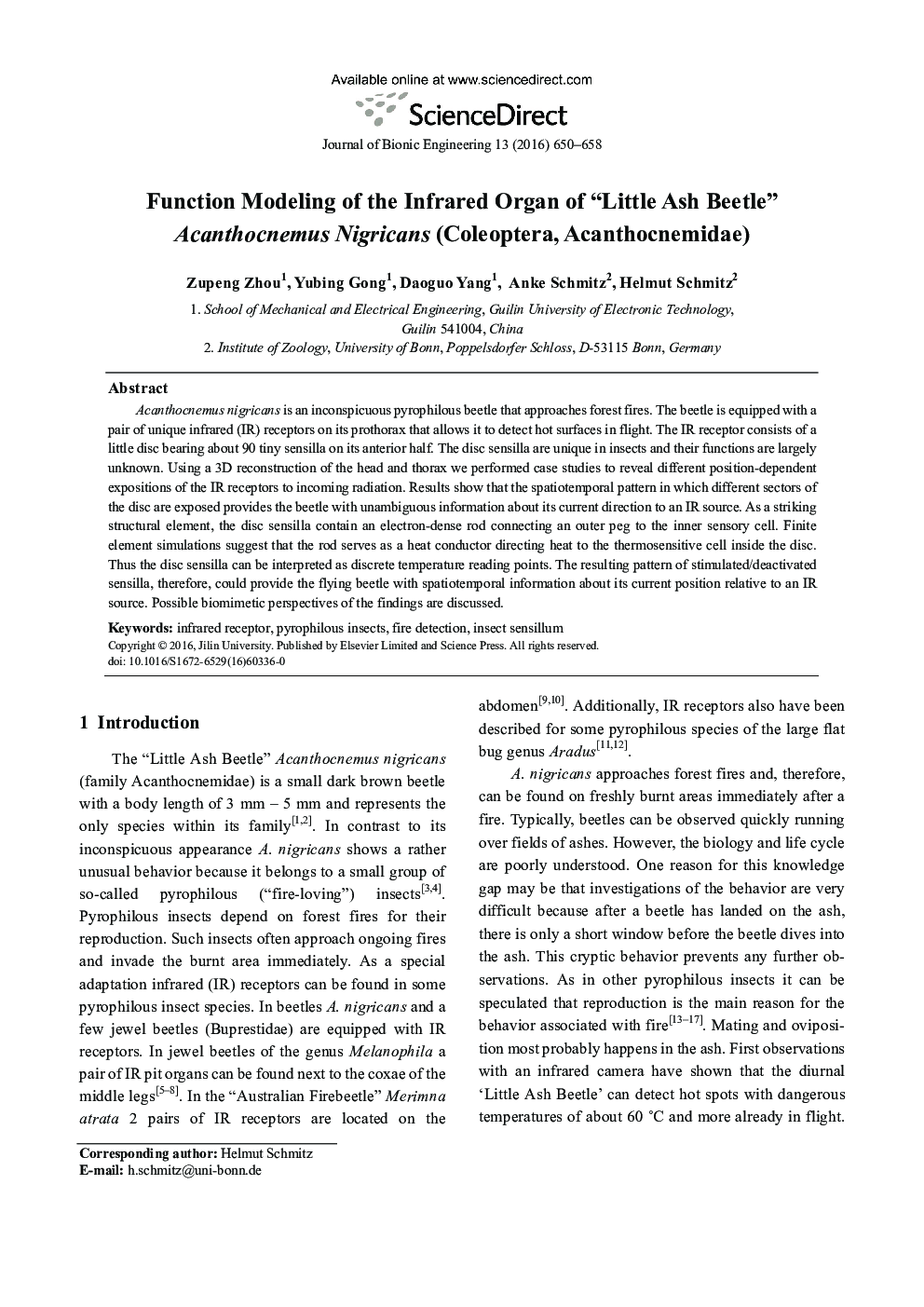| Article ID | Journal | Published Year | Pages | File Type |
|---|---|---|---|---|
| 7216526 | Journal of Bionic Engineering | 2016 | 9 Pages |
Abstract
Acanthocnemus nigricans is an inconspicuous pyrophilous beetle that approaches forest fires. The beetle is equipped with a pair of unique infrared (IR) receptors on its prothorax that allows it to detect hot surfaces in flight. The IR receptor consists of a little disc bearing about 90 tiny sensilla on its anterior half. The disc sensilla are unique in insects and their functions are largely unknown. Using a 3D reconstruction of the head and thorax we performed case studies to reveal different position-dependent expositions of the IR receptors to incoming radiation. Results show that the spatiotemporal pattern in which different sectors of the disc are exposed provides the beetle with unambiguous information about its current direction to an IR source. As a striking structural element, the disc sensilla contain an electron-dense rod connecting an outer peg to the inner sensory cell. Finite element simulations suggest that the rod serves as a heat conductor directing heat to the thermosensitive cell inside the disc. Thus the disc sensilla can be interpreted as discrete temperature reading points. The resulting pattern of stimulated/deactivated sensilla, therefore, could provide the flying beetle with spatiotemporal information about its current position relative to an IR source. Possible biomimetic perspectives of the findings are discussed.
Keywords
Related Topics
Physical Sciences and Engineering
Engineering
Biomedical Engineering
Authors
Zupeng Zhou, Yubing Gong, Daoguo Yang, Anke Schmitz, Helmut Schmitz,
